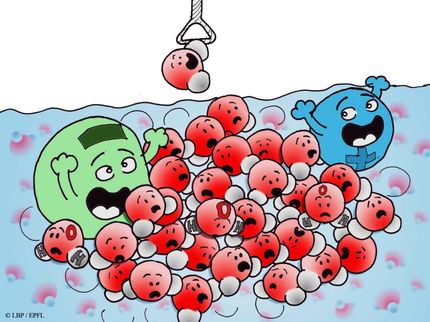Basque Country University researcher studies atom to atom cement
2000 years after the Romans invented cement, this material is still the most commonly used in construction throughout the world. Its complex internal structure means that many questions about this material continue to have unsatisfactory answers.
The PhD thesis by Mr Hegoi Manzano Moro at the University of the Basque Country (UPV/EHU), entitled Atomistic simulation studies of cement components, aimed to provide an answer to these questions and to understand the properties and characteristics of the components of the material.
When cement powder is mixed with water, a series of complex chemical reactions and physical changes takes place. The final result – cement paste – is a complex, multi-component material with a variable and porous composition. Cement is, moreover, a "live" material – throughout its life, even dozens of years after hardening, its structure continues evolving, undergoing physical and chemical changes.
Amongst the different components of the cement matrix, the most important is undoubtedly that known as C-S-H gel. C-S-H gel, acronym for calcium silicate hydrate, represents 70% of the matrix and is mainly responsible for the cohesion and mechanical properties of the material. Nevertheless, despite its importance, many aspects of the gel, including its exact composition, are still unknown.
Simulation at an atomic scale
The application of the atomistic simulation enabled Mr Manzano to understand the properties and characteristics of this gel. The atomistic simulation methods enable the properties and the behaviour of the materials to be studied at a level of the interactions amongst the atoms making them up. Knowledge of cement at an atomic scale will facilitate the design of modifications that will enhance performances and properties
After four years of research, Mr Manzano has found, amongst other things, that there is a clear relation between the mechanical properties of C-S-H gel and the internal structure of the nanoparticles that it is made of. C-S-H gel is made up of colloidal nanoparticles that aggregate in various ways in order to make the material. The manner in which these nanoparticles are ordered amongst each other is probable the factor that most influences the mechanical properties of the cement. The closer together they are and the less space between them there is, the more dense is the C-S-H gel and the better its mechanical properties. But this is not the only factor to be taken into account. The internal structure of each one of these particles also affects the total.
Each particle is formed by laminas of calcium oxide surrounded by chains of silicates of various lengths. We have shown that, the longer these silicate chains, the individual properties of each particle improve and, at the same time, the overall qualities of the C-S-H gel are improved. Based on these results, Mr Manzano concluded that the mechanical properties of the cement can be enhanced by 30% if, during its hydration, the formation of longer silicate chains and more compact C-S-H gels is boosted. An improvement of this magnitude would have great impact on the cement industry which, in 2008, produced almost 3,000 million tons of cement. An enhancement of 30% in the mechanical properties implies approximately 30% less cement in order to achieve the same resistance in a building. Thus, the production of cement is reduced and, as a consequence, emissions of CO2 to the atmosphere likewise.
Despite the research already carried out, there are still many aspects of cement to be studied, in order to achieve improvements in the material that will have an impact on a sector as important as construction.
Other news from the department science
These products might interest you

NANOPHOX CS by Sympatec
Particle size analysis in the nano range: Analyzing high concentrations with ease
Reliable results without time-consuming sample preparation

Eclipse by Wyatt Technology
FFF-MALS system for separation and characterization of macromolecules and nanoparticles
The latest and most innovative FFF system designed for highest usability, robustness and data quality

DynaPro Plate Reader III by Wyatt Technology
Screening of biopharmaceuticals and proteins with high-throughput dynamic light scattering (DLS)
Efficiently characterize your sample quality and stability from lead discovery to quality control

Get the chemical industry in your inbox
By submitting this form you agree that LUMITOS AG will send you the newsletter(s) selected above by email. Your data will not be passed on to third parties. Your data will be stored and processed in accordance with our data protection regulations. LUMITOS may contact you by email for the purpose of advertising or market and opinion surveys. You can revoke your consent at any time without giving reasons to LUMITOS AG, Ernst-Augustin-Str. 2, 12489 Berlin, Germany or by e-mail at revoke@lumitos.com with effect for the future. In addition, each email contains a link to unsubscribe from the corresponding newsletter.




























































